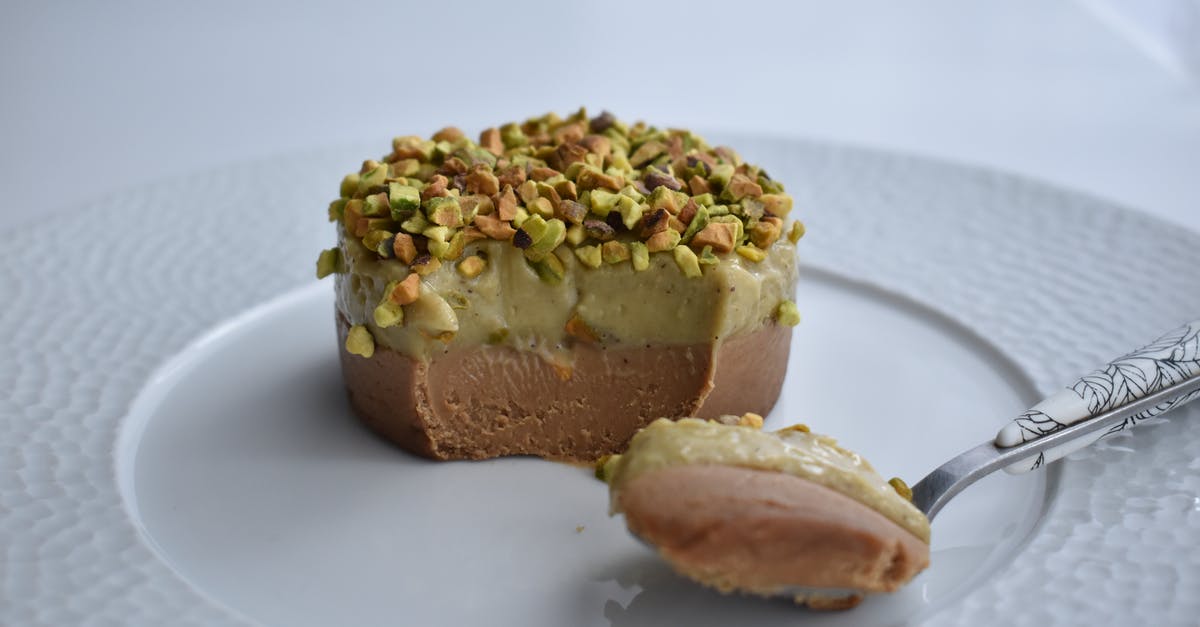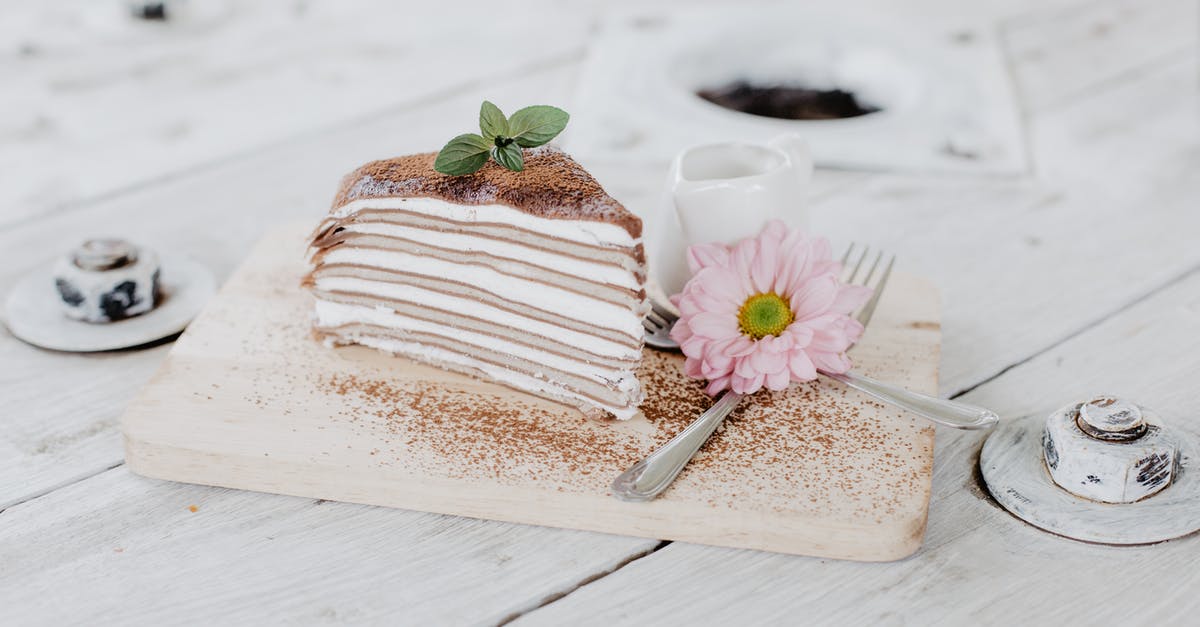Scaling problems with a cake - mousse layer increases more than other layers

We've come up with a recipe for a cake that has four different layers (a dough base plus fillings) and is then covered in chocolate mousse. We tested that recipe as a small sample and concluded that the ideal proportion was to have 70 grams of base layers for 80 grams of chocolate mousse, creating a tight cylindric 150 gram cake. So far, so good.
We then proceeded to make a bigger version, with a wider mold, which would weight 1.88 kilograms, so we scaled our recipe and found out that 875 grams of base layers for 1kg of chocolate mousse. But the problem is, the mousse layer becomes so large that it collapses.
Fixing this is fairly obvious: use less mousse. Maybe, since the mousse is less dense than all the other layers, increasing its total weight has a much bigger impact in terms of volume. But how can we define our recipe in terms of volume rather than weight, then?
I feel like we're missing something very obvious here, but if the proportions of the recipe are the same as the small, initial version, why do we get such different results? How can we scale the recipe in order to achieve a consistent amount of mousse, regardless of the size we attempt to make (i.e. what kind of math is required to make a 1kg, 2kg and 3kg cake from one single recipe / set of proportions, considering the form factor stays the same -- still round, same height, just different diameter -- if it's even possible to do so)?
Best Answer
Density = mass / volume, so if you double the mass of mousse, the volume should also double. The only way you can get more than double volume is if the density decreases, which I doubt is happening.
If you're covering the sides and top with mousse, than mass--which is directly related to volume--isn't going to help, you need to think about surface area. For a cylindrical cake frosted on the sides and top, the surface area and volume are
SA = pi d^2 / 4 + pi d h
V = pi h d^2 / 4
with d the diameter and h the height. You could imagine two cakes of the same mass, one thin and very broad with a very big surface area, the other a bit tall and small around with much smaller surface area. So you'll need to take both height and diameter into account when figuring how much more mousse you need.
Edit
We can simplify a bit. The ratio of new mousse to old mousse in volume or mass should be the same as the ratio of new SA to old SA. Using your edit that the height stays the same:
Ratio = SA_new / SA_old = d_new / d_old * (d_new + 4h) / (d_old + 4h)
I'm going to assume that your height is pretty big, and that four times the height is maybe getting close to the bigger diameter. Then we could approximate the ratio above (there is some height h such that 4h is between d_old and d_new such that)
Ratio = d_new^2 / d_old^2
So if you're going from an 8-inch diameter to a 12-inch diameter you'd want to make 144 / 64 = 2.25 times the mousse. And, as this is pretty rough, I'd add a little to that to be safe and make 2.5 times the mousse. (And having a little extra mousse doesn't seem like the worst thing in world.) If my guess about the height is wrong, just measure and use the actual formula, you'll get better results! Always make a little more than the you expect to need though, because nothing's worse than having not quite enough.
Pictures about "Scaling problems with a cake - mousse layer increases more than other layers"



Top 5 Cake Baking Mistakes! | Preppy Kitchen
Sources: Stack Exchange - This article follows the attribution requirements of Stack Exchange and is licensed under CC BY-SA 3.0.
Images: tomateoignons, ROMAN ODINTSOV, Tim Douglas, Jonathan Borba
